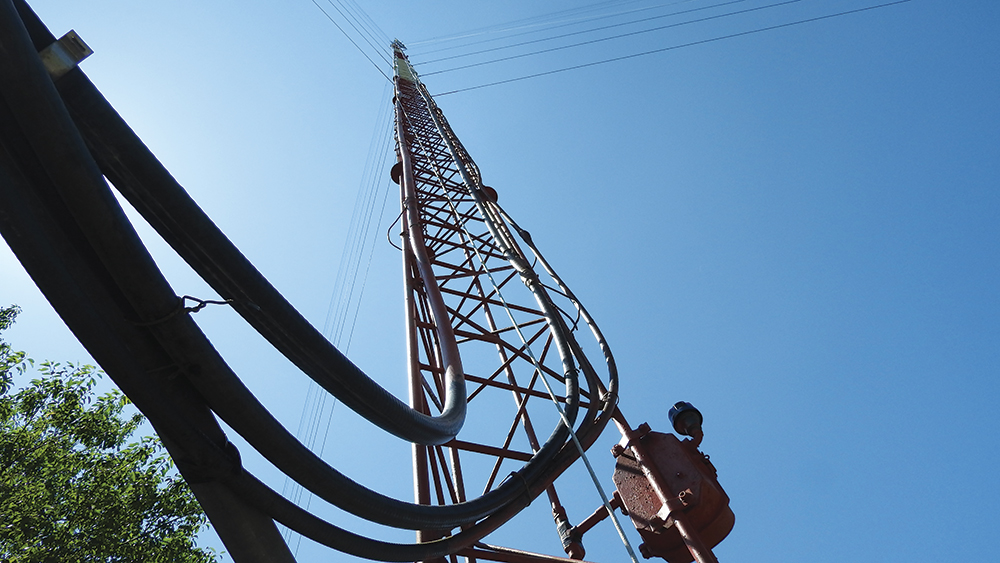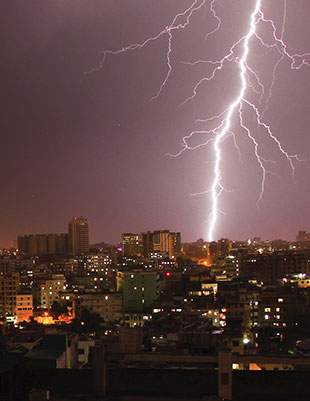Lightning strikes the United States as many as 20 million times each year. Because lightning traditionally causes more deaths than tornadoes or hurricanes and occurs when outdoor activity reaches a peak, the Electrical Safety Foundation International (ESFI) and the Lightning Protection Institute (LPI) are reminding consumers and those who work outdoors of these lightning safety guidelines.
“Lack of awareness about what to do during thunderstorms seems to be a factor in many lightning injuries and deaths,” noted Michael G. Clendenin, executive director of ESFI.
Data from the National Weather Service shows that lightning strikes are fatal in approximately 10 percent of strike victims. Another 70 percent of survivors suffer serious long-term effects.
Outdoors is the most dangerous place to be during a lightning storm. Because lightning can travel sideways for up to 10 miles, blue skies are not a sign of safety. If you hear thunder, take cover.
For protection in homes and buildings, consider contracting with an experienced LPI-certified lightning protection specialist to install a lightning protection system, which can intercept lightning strikes and guide the current harmlessly to the ground.
“The LPI certifies individuals through a master installer testing program to maximize safety through education,” says Bud VanSickle, executive director of the Lightning Protection Institute. “LPI-certified specialists are trained in accordance with national safety standards of LPI, the National Fire Protection Association (NFPA) and Underwriters Laboratories (UL).”
ESFI and the Lightning Protection Institute recommend following these guidelines to stay safe during electrical storms:
- If outdoors, go inside. Look for a shelter equipped with a lightning protection system.
- Go to a low point. Lightning hits the tallest object. Get down if you are in an exposed area.
- Stay away from trees.
- Avoid metal. Don’t hold metal items, including bats, golf clubs, fishing rods, tennis rackets or tools. Avoid clotheslines, poles and fences.
- If you feel a tingling sensation or your hair stands on end, lightning may be about to strike. Crouch down and cover your ears.
- Stay away from water. This includes pools, lakes, puddles and anything damp, such as wet poles or grass.
- Don’t stand close to other people. Spread out.
- Once indoors, stay away from windows and doors.
- Do not use corded telephones except for emergencies.
- Unplug electronic equipment before the storm arrives and avoid contact with electrical equipment or cords during storms.
- Avoid contact with plumbing, including sinks, baths and faucets. Do not take baths and showers during electrical storms.
- Don’t forget pets during thunderstorms. Doghouses are not lightning-safe. Dogs that are chained can easily fall victim to a lightning strike.
Victims of lightning strikes should be given CPR if necessary, and seek medical attention.
LPI recommends contacting local lightning protection specialists for more information; or visit their website atwww.lightning.org. For more information on electrical safety, visit ESFI’s website atwww.electrical-safety.org.
For additional electrical safety information, visit the Foundation’s web site atwww.electrical-safety.orgor call 703-841-3229.













Find Us on Socials